We see a way to accelerate your GMP mRNA drug product manufacturing timeline by 50%
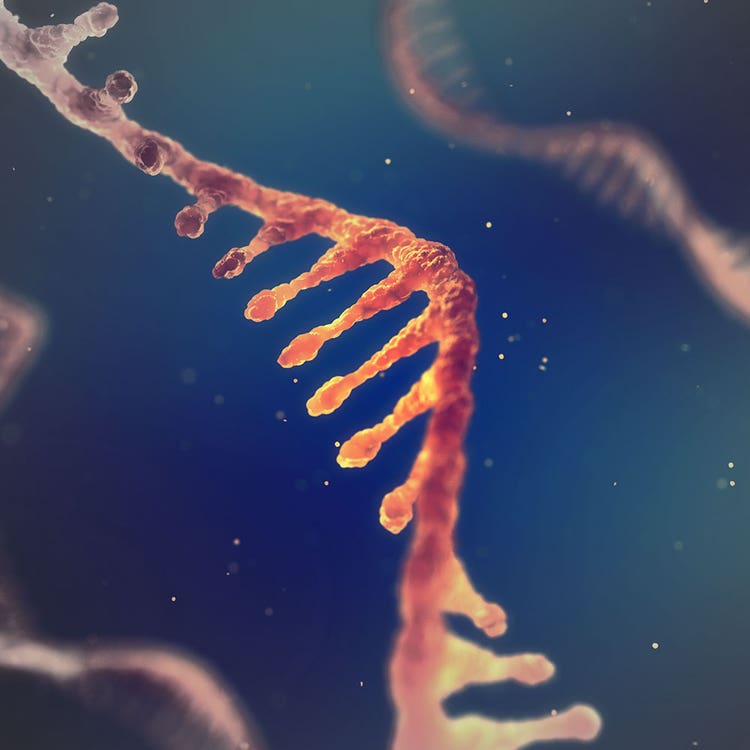
mRNA Development, Manufacturing and Production
WHY IT MATTERS
Why Efficient mRNA Characterization Matters
RNA therapies continue to challenge the central tenets of how we treat diseases; however, mRNA development and characterization are not always simple.
Due to its instability, mRNA necessitates rigorous analytical validation at every processing step. Proper quality controls can ensure consistent synthesis and packaging into lipid nanoparticles, resulting in better therapeutic outcomes.
Leverage a partner with an extensive portfolio and accelerate mRNA development and manufacturing
Our Danaher Life Sciences companies support mRNA development, characterization and manufacturing processes with its comprehensive platform of best-in-class science and technology companies. We recognize the necessity for life cycle management and aim to address this with our extensive instrument, software and services portfolio.
CUSTOMER SUCCESS STORY
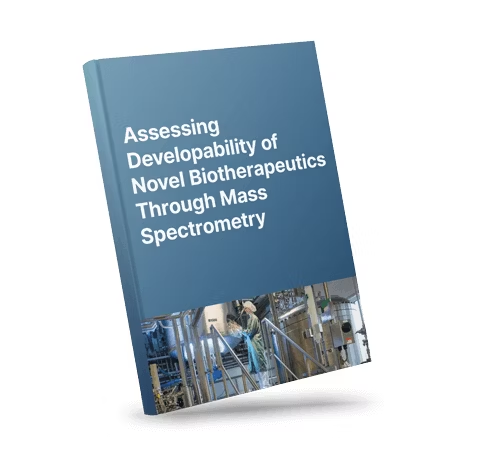
Customer Success Story: Customized Data Workflows
Highly configurable application-specific data workflows
Due to the variety of structures and modalities of our drug candidates, an in-depth characterization of our drug candidates simply cannot be achieved using a “one-size-fits-all” data processing solution.
THE PROCESS
mRNA Development and Manufacturing Workflow
One lab, three paths to faster mRNA outcomes
RESOURCES
Resources for mRNA Development and Manufacturing
Method validation and references

Genedata
Assessing Developability of Novel Biotherapeutics Through Mass Spectrometry
Case Study

SCIEX
Structural characterization of the cationic lipid nanoparticle component, ALC-0315, and its impurities using electronactivated dissociation (EAD)-based MS/MS fragmentation
Scientific and Technical Report
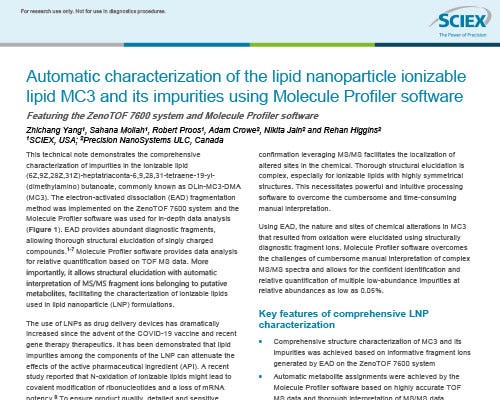
SCIEX
Automatic characterization of the lipid nanoparticle ionizable lipid MC3 and its impurities using Molecule Profiler software
Scientific and Technical Report
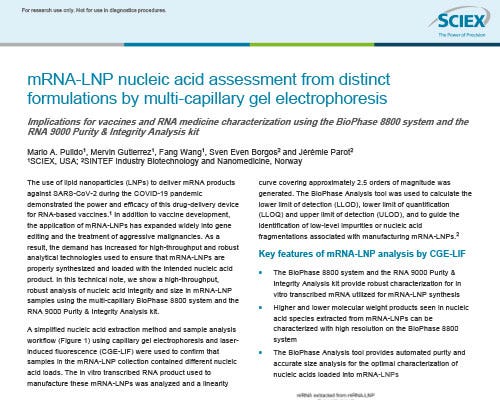
SCIEX
mRNA-LNP nucleic acid assessment from distinct formulations by multi-capillary gel electrophoresis
Application Note
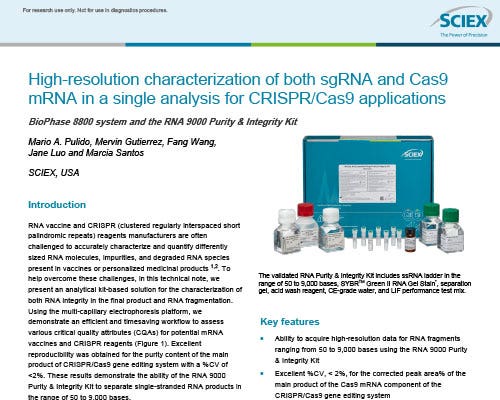
SCIEX
High-resolution characterization of both sgRNA and Cas9 mRNA in a single analysis for CRISPR/Cas9 applications
Application Note
PRODUCT SPOTLIGHT
Efficient Capillary Electrophoresis System
SCIEX Biophase 8800 System
The BioPhase 8800 capillary electrophoresis system is a multi-capillary instrument designed for efficiency and ease-of-use operation for the analysis of purity and heterogeneity of biotherapeutics and the characterization of protein, peptides, nucleic acids and other molecular species.
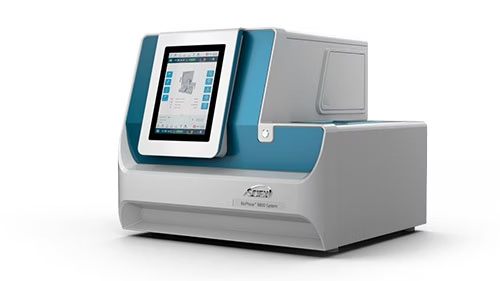
FAQs
What are the structural characteristics of mRNA?
mRNA is a single-stranded molecule composed of nucleotides (adenine, guanine, cytosine, uracil) linked by phosphodiester bonds. It complements one DNA strand, differing only in the presence of uracil instead of thymine. Each nucleotide contains a nitrogenous base and ribose sugar.
Mature mRNA is made up of distinct segments: 5′ cap, 5′ UTR, coding region, 3′ UTR and poly(A) tail. The coding region starts with 'AUG' and ends with stop codons. UTRs are located before and after the coding region, influencing gene expression, RNA stability, translation efficiency and mRNA localization. The 5′ cap is at the mRNA's 5′-end, while the Poly(A) Tail is at the 3′-end.
What are the key advantages of using mRNA in research applications?
mRNA is versatile and can be used to express and research therapeutic or defective proteins. mRNA has high transfection efficiency and low toxicity and doesn't require nuclear entry. Certain mRNA-based therapeutics can continuously translate into proteins, ensuring prolonged expression. These features make mRNA a promising technology in biomedical fields, offering potential benefits for patients with incurable diseases.
What are the main challenges in mRNA development, and how are they addressed?
A primary obstacle in mRNA technology is the need to enhance stability and delivery systems, given the inherent instability and susceptibility to degradation of mRNA molecules. Moreover, achieving effective, targeted and safe in vivo delivery of mRNA continues to be a major hurdle that necessitates further advancements.
How is the scalability of mRNA manufacturing managed for larger-scale projects?
Proper planning is crucial for ensuring and managing scalability. Rigorous quality assurance is necessary to advance large-scale cell manufacturing without compromising therapeutic effectiveness. Automated and intelligent operations that maintain a robust data management program are required for scaling mRNA production and purification processes. Non-viral delivery systems like lipid nanoparticles (LNPs) are attractive options that scale.
What are the potential applications of mRNA in the life sciences beyond basic research?
mRNA shows great promise in therapeutics, allowing for rapid and scalable response to infectious and genetic diseases. Personalized medicine, especially in rare disease treatment, can greatly benefit from tailored treatment options. Despite challenges, breakthroughs in biotechnology, molecular medicine and nanotechnology are helping realize mRNA's full potential.